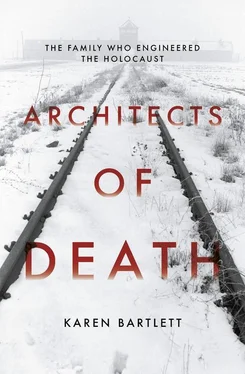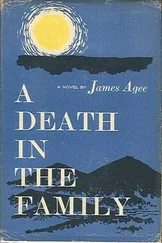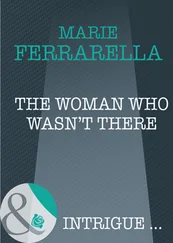The accused Schultze, K., designed and installed powerful ventilation systems in four gas chambers at the Auschwitz death camp, on behalf of the SS.
During commissioning of these systems, he personally carried out a test run in which prisoners were killed in the gas chamber.
In order to increase the capacity of the cremation furnaces in the camp crematoria, Schultze designed special fans and personally supervised their installation.
In early 1943, the accused Prüfer and Schultze tested a cremation furnace in Auschwitz. In the course of the test run, the bodies of approximately twenty prisoners who had been specially killed in the gas chambers for this purpose were cremated in the said furnace. [121] Charges levelled against Karl Schultze, Landesarchiv Thüringen - Hauptstaatsarchiv Weimar.
Gustav Braun was charged with sending fitters to the camp, fulfilling SS orders and for forcing 300 ‘foreign workers’ into slave labour.
The statements each man made during his interrogation contain factual errors. No doubt they were extracted under duress. But, nonetheless, they provide telling insights into the attitude and mindset of Topf and Sons employees as each man worked to advance his position through enabling the worst kinds of atrocities.
Fritz Sander begins his 1946 interrogation by confirming his name and basic details, including how long he has worked for Topf and Sons. His interrogator then asks him how he designed the ‘corpse incineration furnace for mass operation’.
As chief engineer in the company, I presided over the cremation construction department, which was managed by Prüfer. In 1942 (I can’t remember the exact date), he mentioned that the crematoria at the Auschwitz concentration camp couldn’t handle the number of corpses that needed to be cremated. He told me that he had witnessed two to three bodies being shoved into a single chamber, and that the crematoria still weren’t able to deal with the number of corpses they had.
As a specialist in incineration technology, I then took the initiative to build crematoria with greater corpse incineration capacity.
In November 1942, I presented my design for a crematorium for the mass incineration of corpses – the corpse incineration furnace for mass operation – and applied to register it with the state patent office in Berlin.
[This] would work on the conveyor-belt principle, meaning that bodies could be brought to the furnaces mechanically and continuously.
The interrogator then asks Sander who designed the crematoria at Auschwitz and Buchenwald, to which Sander replies that it was Kurt Prüfer, but designs were approved by Sander himself and then overseen by Ludwig Topf. When asked what he knew of Prüfer and Schultze’s visits to Auschwitz, Sander replies:
In the summer of 1942 Prüfer and Schultze told me that large numbers of people were being killed in the gas chambers of Auschwitz and that their bodies were then being incinerated in the crematoria. There were so many of them that three bodies were being pushed into a chamber at a time.
‘So you knew that innocent people were being murdered in the Auschwitz concentration camp?’ the interrogator probes.
‘Yes, I knew [that] from the summer of 1942. Prüfer told me about the mass transportations of people being brought to the Auschwitz concentration camp from Poland, Greece and other countries, who were then murdered in the camp.’
The interrogator later returns to this line of questioning to confirm that Sander knew specifically about the gas chambers. ‘At what point did Prüfer tell you that the crematoria could not handle the incineration of the bodies? Did you ask him out of interest where all the bodies were coming from?’ he asks.
Sander replies: ‘Yes, I did ask Prüfer why there were so many bodies in the camp; he replied that they were killing people there in gas chambers and then cremating their bodies.’
But before this the interrogator asks: ‘Knowing that the concentration camp crematoria were being used for the annihilation of innocent people, how could you – on your own initiative – suggest the design of an even bigger crematorium for the mass incineration of bodies?’
Sander replies: ‘As a German engineer and employee of the Topf company, I felt it was my duty to use my knowledge to help Hitler’s Germany to victory, even if that resulted in the annihilation of people – just as every engineer in aircraft construction did.’ [122] Fritz Sander interrogation report, Landesarchiv Thüringen - Hauptstaatsarchiv Weimar.
Some of Sander’s inconsistencies regarding the dates of his conversations with Kurt Prüfer have been seized upon by Holocaust-denying historians as evidence that his statement was fabricated. Of course, it’s likely that Sander was confused. But while he may have mixed up whether the conversation with Prüfer took place in 1942 or 1943, there can be no denying Sander’s chilling description of the ‘corpse incineration furnace for mass operation’ – and his rationale that it was his duty to help Hitler’s Germany achieve victory, even if that resulted in the annihilation of a population.
When Karl Schultze is interrogated, he formulates a slightly different defence. Initially, Schultze confirms the details of his employment and admits that he made three trips to Auschwitz in 1943 in connection with fitting the ventilation systems for the crematoria and gas chambers.
The first time I was there, I was summoned to see an SS man who worked at the camp and who warned me that the construction and outfitting work that our company was doing on crematoria and gas chambers in Auschwitz was an extremely important state secret. He made me sign a confidentiality agreement. I had already had to sign a similar agreement for Ludwig Topf, since I came into direct contact with the work that the company was doing for the SS construction management unit at Auschwitz.
After detailing how he witnessed the gassing of the first prisoners at the crematorium, Schultze then states that he reported this to Ludwig Topf upon his return to Erfurt and that Ludwig ‘did not react to this [information]’. The interrogator points out that in Schultze’s first questioning in 1946 he claimed to have also told Kurt Prüfer about the gas chambers. Schultze admits that he may have done, ‘but it’s a long time ago and I can’t remember the exact circumstances and nature of our conversation’. Schultze agrees that he and Prüfer travelled to Auschwitz together in early 1943 to fix the broken fan in Crematorium II, and that during this visit ‘there were around sixty prisoner corpses lying next to the cremation furnaces. I assume they had been killed in the gas chamber. About twenty-five of these corpses were incinerated in our presence. After that I didn’t go to Auschwitz again.’
The interrogator asks Schultze what he would like to say in reaction to a document that shows that ‘4,756 prisoners were murdered every day’ in gas chambers built and equipped with his involvement.
‘I have no reason to doubt these official figures. The document really does show [that],’ Schultze replies.
Does he realise, the interrogator asks, that this means he was working on the mass extermination of innocent people?
Schultze responds:
I must admit that […]. However, when I was doing this work, I assumed that the SS wouldn’t be killing innocent people in the crematoria and gas chambers, but that they would only be killing criminals who had been sentenced to death for their actions against German troops and authorities in Poland and other occupied territories.
The interrogator says that, in addition to Jews and other non-Aryans, the SS did murder people who were fighting for liberation from German rule of their homelands – but why does Schultze consider these people criminals?
Читать дальше












